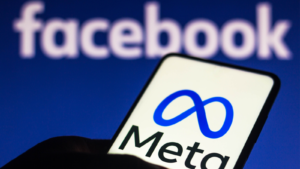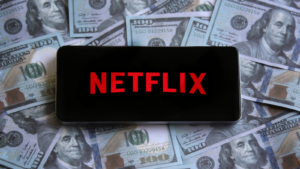We’re a little more than halfway through first-quarter earnings season, so now is the time to review this earnings season winners and losers. In general, market results have been encouraging so far. Forty-six percent of companies listed on the S&P 500 have reported their quarterly results. Seventy-seven percent beat forecasts with their earnings or profits, while 60% announced better-than-expected revenue or sales. That’s quite good considering it comes amid reports that the economy is slowing and inflation remains stubbornly high.
Of course, not every company has hit it out of the park with their Q1 results. Many companies have missed expectations or offered weak forward guidance, sending their stocks down as a result. Each day is filled with headlines of stocks that are plunging after companies disappointed analysts and investors, erasing billions from market capitalizations.
So, which companies have come out ahead and which have tanked with their Q1 financials? Let’s take a look at some of this earnings season winners and losers.
Winners: Alphabet (GOOG/GOOGL)

Google parent company Alphabet (NASDAQ:GOOG, NASDAQ:GOOGL) is hands down the biggest winner of the Q1 earnings season so far. GOOGL stock rose 14% immediately after the company reported blowout first-quarter earnings, declared its first dividend payment and announced a new $70 billion stock buyback program. It was a triumph among tech companies and led to the entire stock market rising. On June 17, Alphabet will pay its stockholders a cash dividend of 20 cents per share, with promises of more to come.
Beyond the dividend and stock buyback, Alphabet reported earnings per share (EPS) of $1.89 versus $1.51 that was expected among analysts. The Q1 profit was up 57% from a year earlier. Revenue from January through March totaled $80.54 billion compared to $78.59 billion that had been estimated. Sales in Q1 increased 15% from a year ago, the fastest rate of growth in two years. Much of the success was driven by a rebound in online advertising after two years in the doldrums.
GOOGL stock has now increased 54% over the past 12 months.
Domino’s Pizza (DPZ)

Restaurant chain Domino’s Pizza (NYSE:DPZ) also had a very good Q1 print, sending its stock up 6% as a result. The company’s first-quarter financial results beat Wall Street forecasts on the top and bottom lines. Domino’s reported EPS of $3.58, well ahead of the $3.40 consensus expectation of analysts. Profits were up 22% from the previous year. Revenue came in at $1.08 billion, which was slightly above Wall Street forecasts. Sales rose 6% year-over-year (YOY).
Domino’s attributed the strong financial results to accelerating sales at its more than 20,000 outlets worldwide. The company is executing its “Hungry for More” growth strategy that aims to open 1,100 new stores by 2028, increase retail sales by 7% a year and grow operating income by 8% per year. Indications are that Domino’s is succeeding with its plan. Same-store sales increased 5.6% at the company’s U.S. locations in Q1, beating 1% growth at its international outlets. Growth was driven largely by higher delivery orders.
Domino’s has also relaunched its loyalty rewards program to better engage with lower-frequency customers. The program now has 33 million active members. During Q1, Domino’s opened 164 new restaurants, all but 20 of which are situated overseas. The company also repurchased $25 million worth of its own stock during the quarter.
DPZ stock has gained 67% in the last 12 months.
Eli Lilly (LLY)

Shares of Eli Lilly (NYSE:LLY) are up 5% after the pharmaceutical company reported a better-than-expected first-quarter profit and raised its forward guidance as sales of its popular weight-loss drugs takeoff. The company announced EPS of $2.58 versus $2.46 that was expected on Wall Street. Revenue in the quarter missed analyst targets, coming in at $8.77 billion compared to $8.92 billion that was forecast. Despite the miss, sales were up 26% YOY.
Looking ahead, Eli Lilly said it now expects full-year earnings of $13.50 to $14 per share, up from previous guidance of $12.20 to $12.70 a share. The company expects full-year revenue of $42.4 billion to $43.6 billion, which is an increase of $2 billion at either end of the range. Analysts had expected full-year earnings of $12.50 a share and sales of $41.44 billion. Growing sales of blockbuster diabetes drug Mounjaro and newly launched weight-loss drug Zepbound are driving results at Eli Lilly.
The latest earnings included the first full quarter of Zepbound sales. The drug, which was approved by U.S. regulators last autumn, reported $517.4 million in Q1 sales. Some analysts have forecast that Zepbound could post more than $1 billion in sales in its first year on the market, and that it might become the biggest selling drug of all time.
LLY stock has increased 92% in the last 12 months.
American Express (AXP)

If the economy’s slowing, someone forgot to tell American Express (NYSE:AXP). The credit card giant reported strong first quarter profits as its customers continue to spend on shopping, dining out and travel. Of course, American Express benefits from the fact that its clients tend to be more affluent and their spending holds up better than most during economic downturns. American Express said that its cardholder spending increased 7% from a year ago during Q1 of this year.
The credit card company reported EPS of $3.33 compared to $2.95 that was anticipated by analysts. Revenue in Q1 totaled $15.8 billion which matched Wall Street expectations. Sales were up 11% from a year earlier. Billed business, which represents the transaction value on American Express credit cards, rose 6% during the quarter to $367 billion. In terms of guidance, American Express maintained its previous revenue growth forecast of 9% to 11% and a profit estimate of $12.65 to $13.15 per share for this year.
AXP stock has gained 46% in the last 12 months.
Losers: Meta Platforms (META)

A little more than halfway through Q1 earnings season and Meta Platforms (NASDAQ:META) looks like the big loser. META stock plunged 16% after the technology company delivered forward guidance that disappointed investors and outlined plans to continue spending heavily on new products, notably related to artificial intelligence (AI). CEO Mark Zuckerberg’s net worth dropped by $18 billion in one day after the Q1 print. Ironically, Meta’s outlook overshadowed what were otherwise strong quarterly results.
Meta reported EPS of $4.71, exceeding the $4.32 that was expected among analysts who track the company. Earnings more than doubled from $2.20 a share in the previous year. Revenue in the quarter totaled $36.46 billion compared to $36.16 billion expected on Wall Street. Sales were up 27% from a year earlier, representing the fastest rate of growth since 2021. Sadly, the company’s guidance fell short of Wall Street’s expectations. Growing investments in mixed reality and AI also didn’t sit well with analysts and investors.
META stock has fallen 15% since the Q1 print was delivered. However, the share price is still up nearly 84% in the last 12 months. Depending on how you look at it, META has managed to be one of the earnings season winners and losers.
McDonald’s (MCD)

McDonald’s (NYSE:MCD) can’t seem to catch a break. Despite launching an aggressive growth strategy, the Golden Arches continues to report substandard quarterly results. The company just announced mixed Q1 figures, which it blamed on consumers pulling back on discretionary spending and boycotts at its restaurants in the Middle East. The Chicago-based restaurant chain reported EPS of $2.70 versus $2.72 that was expected among analysts. Revenue amounted to $6.17 billion compared to $6.16 billion that was forecast.
Overall, sales at McDonald’s increased 5% in Q1. Although global same-store sales rose 1.9% during the January through March period, that growth missed estimates of 2.1%. During their earnings call, management acknowledged that higher menu prices have pushed some customers away. McDonald’s also noted that its restaurants in the Middle East have been hurt by the Israel-Hamas conflict and related boycotts in that region. Earlier in April, McDonald’s bought the 225 restaurants operated by its Israeli franchisee.
MCD stock has declined 8% over the past 12 months.
Netflix (NFLX)

Like Meta Platforms, Netflix (NASDAQ:NFLX) posted strong Q1 results. However, NFLX stock fell 9% after its latest print was made public because it announced that it will no longer report quarterly membership numbers and average revenue per membership. Management said they are halting the reporting of subscriber numbers as they want investors to instead focus on metrics such as revenue and free cash flow. Investors took the news badly, with some claiming it’s a sign that subscriber growth is slowing.
Controversy over the reporting of subscriber numbers overshadowed the fact that Netflix reported EPS of $5.28 compared to $4.52 that was expected on Wall Street. Revenue totaled $9.37 billion versus $9.28 billion that was estimated among analysts. As for subscribers, Netflix reported a grand total of 269.6 million at the end of Q1, ahead of expectations for 264.2 million and up 16% from a year earlier. Management warned though that subscriber growth in the current second quarter will be lower than in the first due to what they called “seasonality.”
NFLX stock has fallen 9% during April, but the share price is up 72% over the last 12 months. Like META, NFLX’s numbers make it both one of the earnings season winners and losers
On the date of publication, Joel Baglole held long positions in GOOGL and LLY. The opinions expressed in this article are those of the writer, subject to the InvestorPlace.com Publishing Guidelines.
